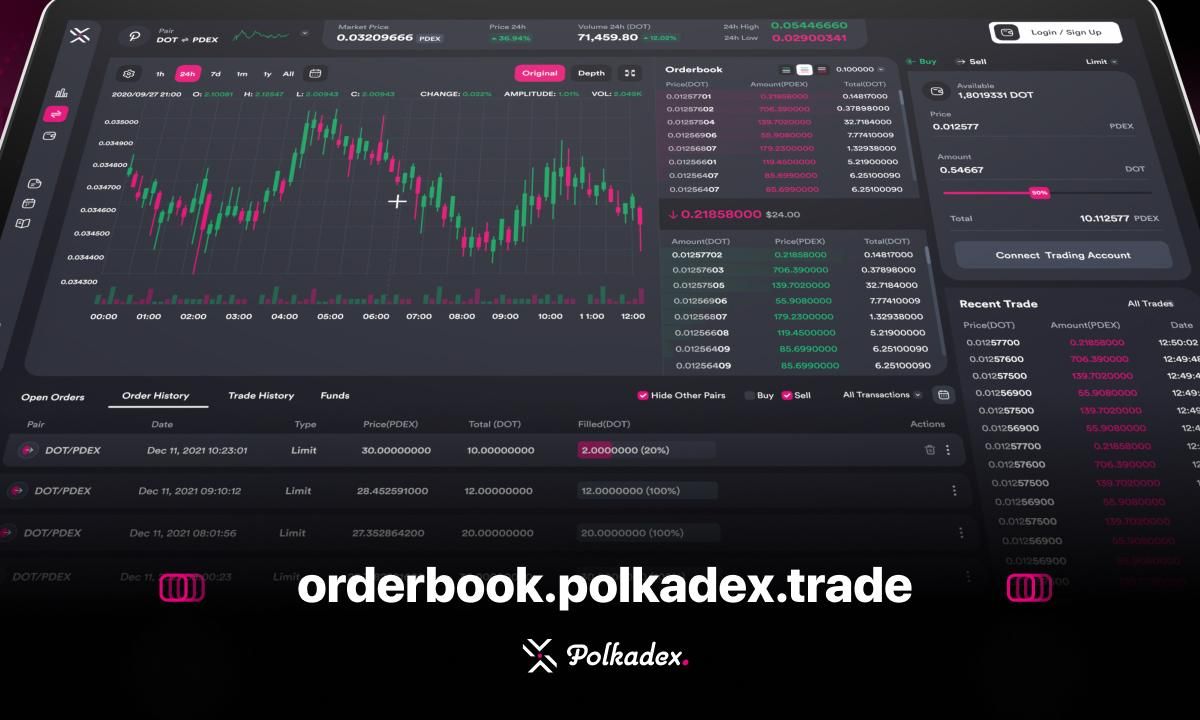Just over a year after the launch of the Polkadex mainnet, Polkadex Orderbook is now open for trading. The revolutionary orderbook-based decentralized exchange (DEX) is set to be a game-changer for digital asset trading and DeFi.
In the last few years, DEXs like Uniswap have changed the way in which cryptocurrency is traded by giving traders control over their own funds. However, the automated market maker (AMM) model popularized by such DEXs has been plagued with exorbitant transaction fees, price slippage, frontrunning, low interoperability, and limited functionality.
SponsoredWhile it may be riskier due to potential hacks and data breaches, many crypto traders still prefer to use the advanced trading features of centralized exchanges (CEXs), which are cheaper to use and offer high levels of functionality and interoperability.
“This is the first time an orderbook is connected to two leading ecosystems, Ethereum and Polkadot, directly. We will continue to evolve as a cross-chain DEX connected to all leading ecosystems and sourcing native liquidity from BTC, XRP, MATIC, etc.”
said Gautham J, CEO and Co-Founder of Polkadex.
Polkadex Orderbook’s cutting-edge architecture means that while it may look, feel, and perform like a centralized exchange (CEX), it remains non-custodial and preserves the security aspect of DEXs.
A unique combination of blockchain and trusted execution environment (TEE) technology, Polkadex Orderbook is not only the first project to use the Substrate Abstraction Layer for SGX technology to build a decentralized exchange, but it is also one of the first retail use cases of this technology in general.

With the decentralized security of a layer 2 DEX built on top of the Polkadex network and a sleek CEX-like interface containing advanced trading features (including limit and market orders), Polkadex Orderbook elegantly bridges the gap between centralized and decentralized trading. Built to be capable of scaling to high-frequency trading, Polkadex Orderbook is as fast–if not faster than–existing CEXs.
Sponsored“We will continue to position our DEX to empower the global trading community and drive towards a paradigm shift in being the torchbearer for trustlessness”
said Deepansh Singh, COO, and Co-Founder of Polkadex.
While this release is the culmination of almost two years of work, it is only the beginning of what Polkadex has set out to accomplish. Currently, Polkadex Orderbook will only be supporting one trading pair, PDEX/USDT, with USDT being bridged over from Ethereum through ChainBridge.
After a bug bounty program with the aim of further securing the platform, the Polkadex team will start ramping up support for more trading pairs, with v2.0 coming within the next six months.
In the future, Polkadex will replace ChainBridge with its own tailored decentralized bridging mechanism, THEA, which will allow deposits and withdrawals from Ethereum to Polkadex and vice versa. THEA is set to add support for other Layer 1 networks down the line.
Also, after having won a Polkadot parachain slot in May, Polkadex will soon connect its parachain to the Polkadex network and pave the way for assets from across the Polkadot parachain ecosystems to be tradeable. Both THEA and the Polkadex parachain will allow Polkadex Orderbook to become the first interoperable non-custodial exchange capable of high-frequency trading.
“We are trying to bridge the gap between Web 2.0 and Web 3.0. This is the first time an application-specific blockchain is designed from the ground up for an actual use case. Polkadex will be pioneering a new era in blockchain economics”
said Vivek Prasannan, Executive Director and Co-Founder of Polkadex.
Community and Social Media:
Website | TG Chat | TG Announcements | Medium | Youtube | Reddit | Discord | Linkedin | Github | Twitter

